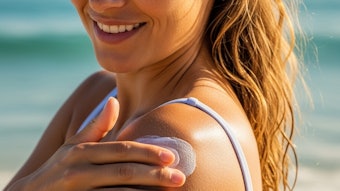Cohesion of the various epidermal layers is crucial to ensure homeostasis of the barrier function, limit excessive water loss and thereby guarantee good moisturization of the skin. To date, Silab reports the skin’s barrier function has been attributed to the stratum corneum (SC) and its specific “bricks and mortar” structure; however, it has recently been accepted that tight junctions also play an important role in homeostasis of the skin’s barrier function by ensuring adhesion between the keratinocytes of the stratum granulosum. They regulate the permeability of paracellular spaces and therefore help maintaining moisturization of the various layers of the epidermis. Moreover, recent data demonstrates that the compounds in natural moisturizing factors, in particular, lactate, also help to regulate pH, an important parameter that partially influences the integrity and cohesion of the SC.
Based on these studies, Silab has developed Cohesium, an active ingredient purified from the tubers of ophiopogon. Originating in Asia, ophiopogon or Japanese lily turf is a plant that can withstand drought due to the presence in its tubers of mucilages, substances with water-trapping properties. The product is said to trigger the formation of tight junctions by stimulating the synthesis of claudin-1, a transmembrane protein essential to the cell-cell adhesion and the impermeability of the tight junction; and by stimulating the synthesis of ZO-1 (zonula occludens), scaffolding proteins that regulate the assembly of tight junctions along with their paracellular permeability.
Tested at a concentration of 1% on normal human keratinocytes, the product reportedly induced a 27% increase in the synthesis of ZO- and, in addition, restored the formation of the membrane network of ZO-1 after aggression by sodium lauryl sulphate. Cohesium was also shown to increase skin moisturization in a study conducted on 25 healthy female volunteers with dry skin on their calves. After 14 days of twice daily applications of the product formulated at 3% in a gel, a 13% increase in hydration was observed. This effect was observed in 80% of the volunteers.
The company also reports that a TEWL study conducted on 20 healthy female volunteers with normal skin showed, after 14 days of twice daily applications of the product at 3% in a gel, significant reductions in TEWL after repeated aggressions with SLS by 11% (P = 0.0297). This effect was observed in 65% of the volunteers.
For more information, visit www.silab.fr.










